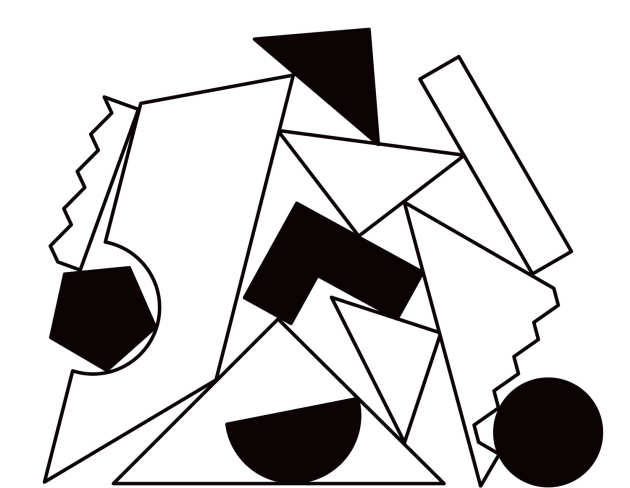Fresh from regular slots on Radio 4’s Puzzle for Today, Imperial’s best minds set the ultimate puzzle challenge.

Illustrations: Mike Lemanski
1: Hard
Joe the milkman has a 4x6 rectangular crate that can hold 24 milk bottles, with each cavity being capable of holding a single bottle. He only has 18 bottles (and nothing better to do) so he is wondering how many ways he can put these in the crate so that each row and each column has an even number of bottles.
Dr Lynda White, Principal Teaching Fellow in Experimental Design, Department of Mathematics
See the answer
Solution: 480
Instead of thinking of the 18 bottles, think of the six holes left - the final answer will be the same. You will soon realise that you need two holes in each row and each column.
For any choice of three rows and three columns there are six ways of allocating the six holes, with two holes in each row and each column, to six of the nine cavities. No other kind of allocation will work. There are four ways of choosing the three rows out of four and 20 ways of selecting the three columns out of six.
In total we have 6x4x20=480 ways of allocating the holes (and the same number of ways of allocating the 18 bottles).
2: Very hard
A maths professor of my acquaintance has noticed that the long number N on her credit card has ten digits. The first digit of N is the number of zeros in N, the second digit is the number of ones, the third digit is the number of twos, and so on until the last digit is the number of nines in N. What is her credit card number?
Dr Lynda White, Department of Mathematics
See the answer
3: Fiendish
Aluna, Bruce and Cora each have a different positive whole number written on their head, and can see the numbers on the other two people. They are told that one of the numbers is the sum of the other two. Without prior communication, the following truthful statements are made.
Aluna: “I don’t know what number is on my head.”
Bruce: “I don’t know what number is on my head.”
Cora: “I don’t know what number is on my head.”
Aluna: “My number is 50.”
What are the three numbers on their heads?
Melissa Lee, Research Postgraduate, Department of Mathematics
See the answer
Solution: Aluna, Bruce and Cora's numbers are 50, 30 and 20.
When Aluna sees the other two numbers (30, 20), he knows that his number has to be either 10 or 50 (since one of the three numbers is the sum of the other two).
When the person who has 30 on their head (say, Bruce) says they don't know their number, that is telling Aluna that his number is not 10. If it were 10, then Bruce would see the numbers 20 and 10, telling him that his number is either 30 or 10. It cannot be 10, since no two of the numbers are the same, so Bruce would know for sure that his number is 30.
Since Bruce doesn't know his number in the first round of guesses, then Aluna knows that his own number is not 10, so it must be 50. This deduction allows him to correctly identify his number in the second round.
How to enter
If you can solve our brain teasers, send your answers by email with the subject line Imperial 45 puzzle challenge by Friday 14 January 2019.
Senders of the first ten correct solutions for two or more of the puzzles will receive a copy of the Today Programme Puzzle Book, featuring 280 cryptic, linguistic and numerical brainteasers from Dr Lynda White, other Imperial researchers, and contributors from around the world.
Solutions and winners will be printed in Imperial 46 in May 2019 and on the magazine homepage from January 2019.
The winners and answers from Imperial 44
Congratulations to the first ten respondents who contacted us with two or more correct solutions from the previous issue:
- Caterina Buizza (MSci Mathematics 2015)
- Hugh Strafford (Wye College 1979)
- Nick Andell (Physics 1995)
- Martin Marriott (MSc Civil Engineering 1981)
- Paul Rowland (Electrical Engineering 1991)
- Bob Thomas (MSc Mineral Resources Engineering 1992)
- Peter Webb (Chemistry 1968)
- Devendra Patel (Charing Cross and Westminster Medical School 1994)
1: HARD
However you break the chocolate, you will take 11 cuts to separate it because at each stage you increase the number of pieces of chocolate (which may consist of more than one square) by one until they are all separated.
2: VERY HARD
There may be any number of soldiers of the form 58+105k, where k is an integer greater than or equal to zero (eg, the first few valid answers are 58, 163, 268 and 373).
3: FIENDISH
There are infinitely many primes, even though the fraction becomes tiny for larger numbers.
The simplest way to see that there is no largest prime number is to assume that this is the case and then show that this leads to a contradiction. If you multiply all the prime numbers, from two up to the hypothetical largest prime, and then add one to this product, you’ll have found a number that is not divisible by any of this list of primes.
But that means that it must be a prime number itself; as it is clearly larger than the hypothetical largest prime that hypothesis is contradicted. So, there must be infinitely many primes. (Not that large primes are easy to find: there was a press release in late 2017 when researchers found 2^77,232,917; one, a number with 23,249,425 digits, was shown to be a prime.